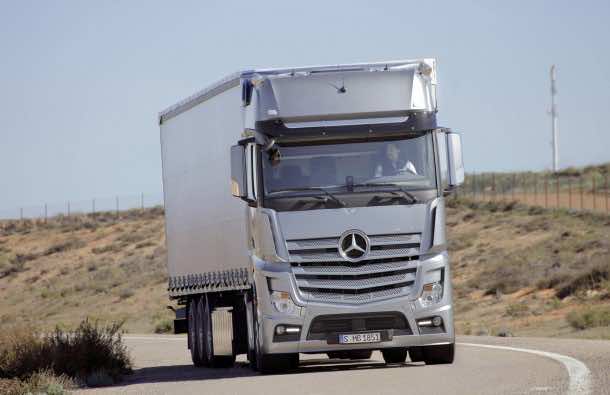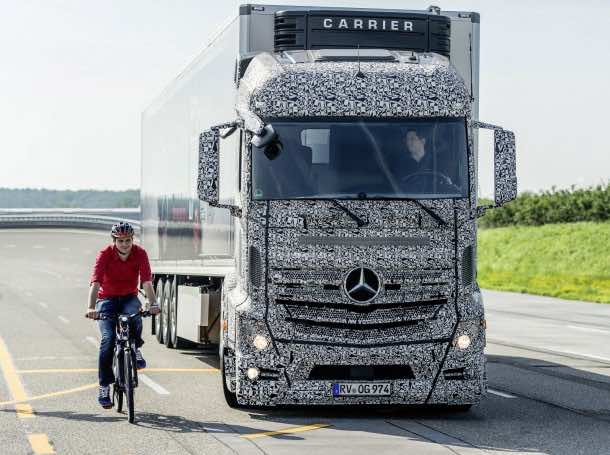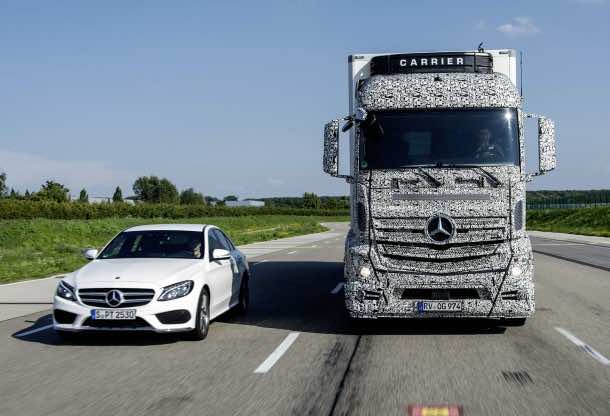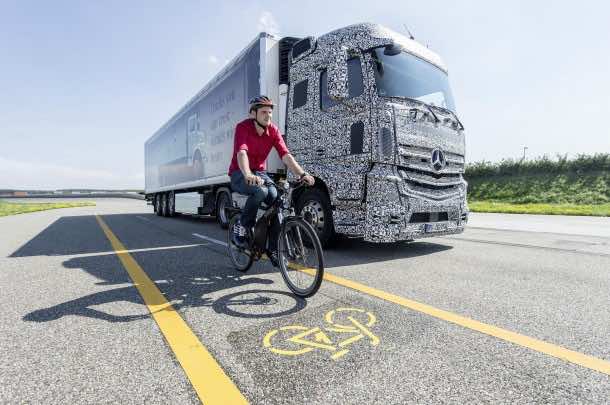Trucks are one of the most employed means of transportation when it comes to heavier loads. We have quite large trucks these days that can be seen on highways and one can’t help but imagine how gigantic they are. However, with size comes responsibility and with all the technology out in the market, it can still be a hassle to safely drive these trucks. The collision hazards also spike when such mammoth trucks are taking turns. In order to tackle this issue, the truck division of Mercedes Benz; Daimler has come up with a radar based system that is capable of alerting the truck driver when a collision becomes imminent from almost all of the truck area that is unobservable for the driver.
The Mercedes-Benz Blind Spot Assist System is capable of alerting the driver of dangers while taking turns and even takes into calculation the tractrix curve. The tractrix curve is the curve that the towed trailer travels along under the influence of friction when it is pulled along horizontally. The system can point out possible collisions with stationary objects such as power poles, bollards or even traffic lights.
The system also helps the driver while changing lanes by pointing out via optical signal if there is any moving object present at the passenger side of the vehicle. The A-pillar on the passenger side at eye level has a triangular LED light that lights up if there’s a possibility of accident and when the possibility becomes a collision risk the LED turns red and a warning buzzer goes off.
All this is achieved by making use of a radar sensor that is placed right ahead of the rear axle on the passenger side of the truck. It is aligned so that it is capable of scanning the entire span of the truck or truck/trailer combo while including about 6.5 ft. in front of the vehicle.
Sven Ennerst, Head of Global Product Engineering and Procurement at Daimler Trucks said; ‘The development of Blind Spot Assist is now finished from a technological standpoint. At Daimler, we have always been concerned about trucks having collisions when turning corners. However, before we launch the system on the market, we first have to extensively test and validate it. This means that the system still has to undergo hundreds of thousands of kilometers of testing and to be adapted to a wide variety of vehicle variants.’
There are still, however, no details on when the first truck equipped with this system will be launched commercially.


